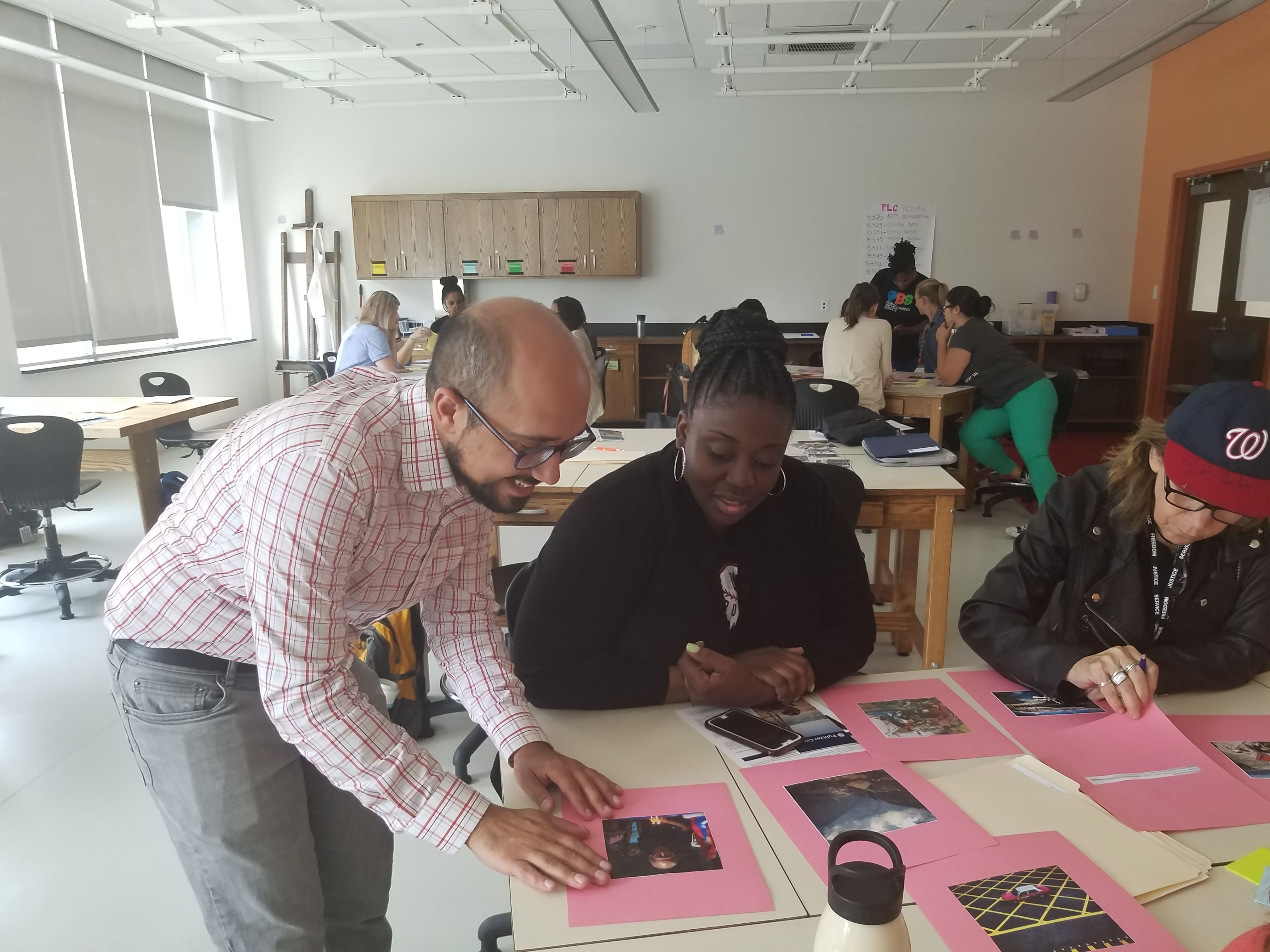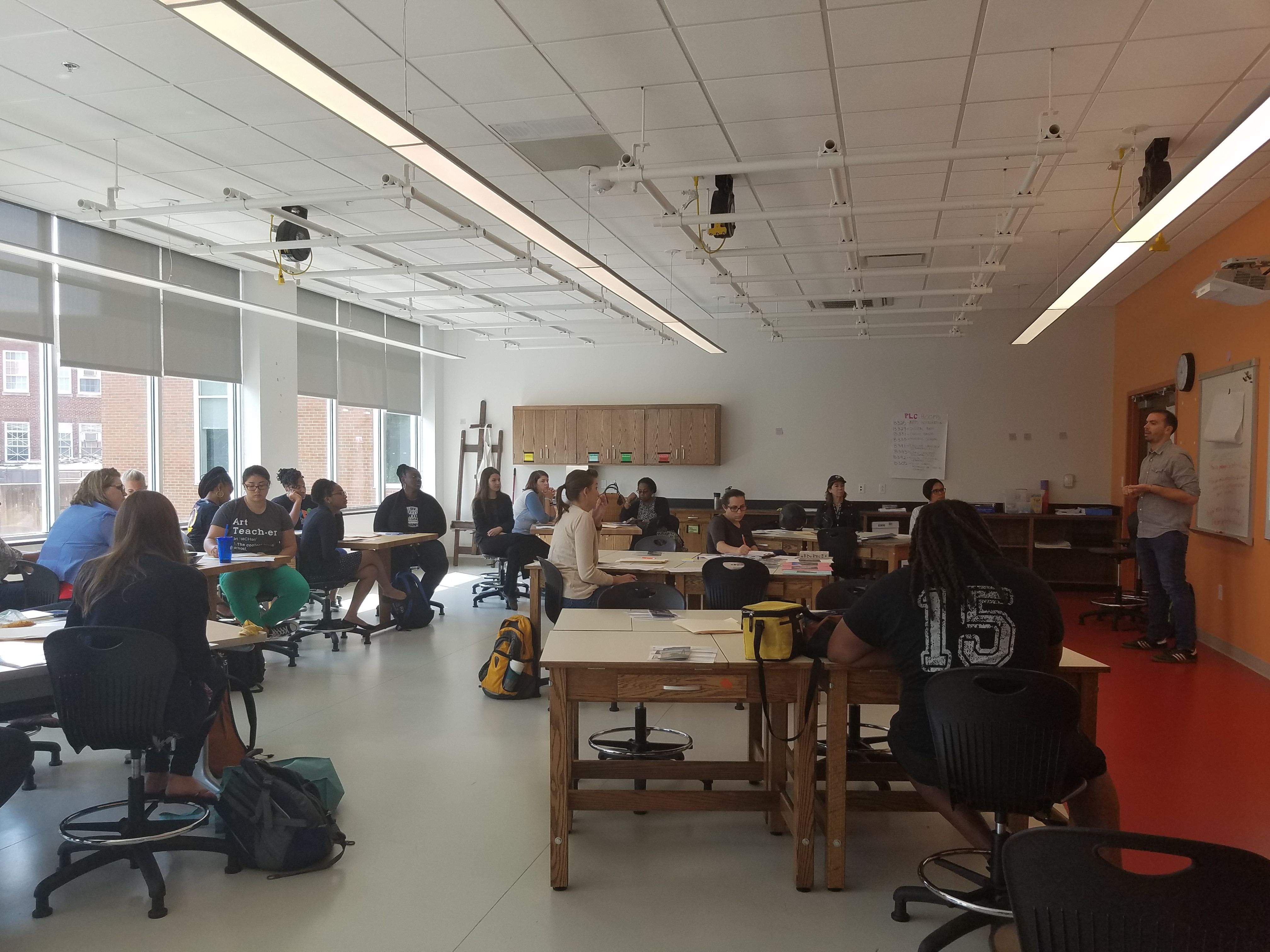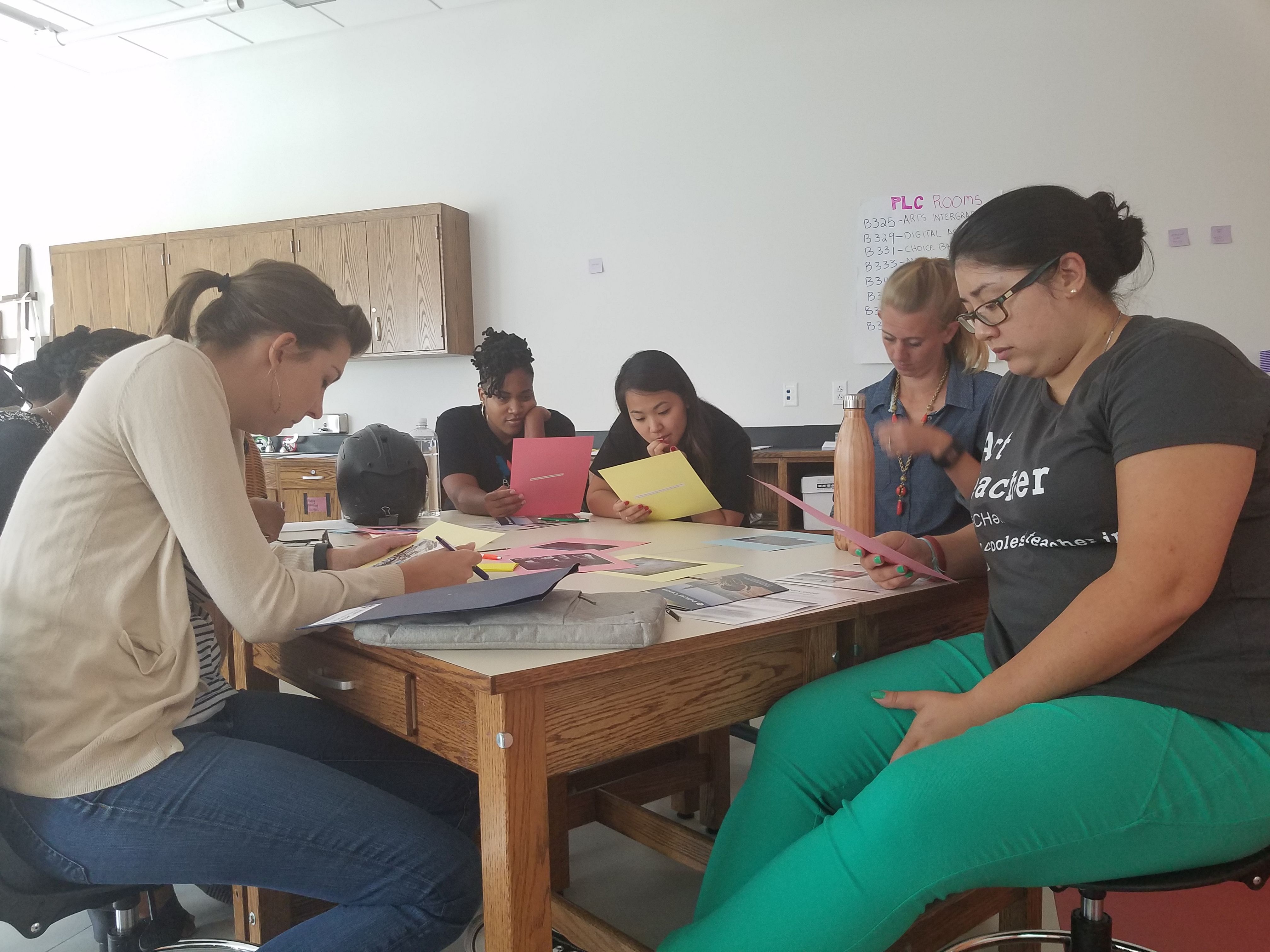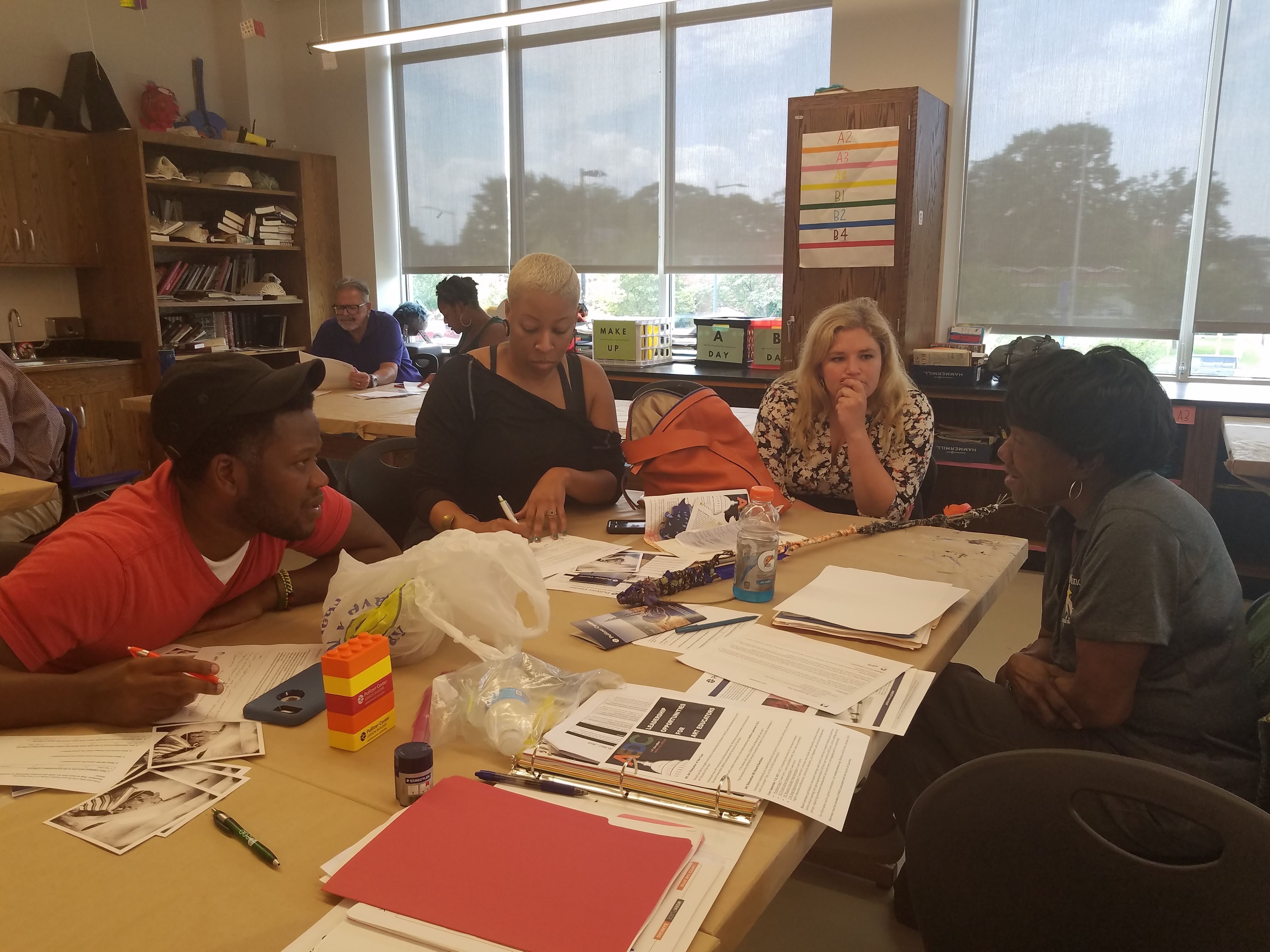On Aug. 16, 40 visual arts teachers from DC Public Schools (DCPS) explored "Everyday DC" and "The Empathy Gap," cornerstone unit plans developed by Pulitzer Center and the visual arts department at DCPS to model methods for introducing photography, curation and reporting skills to middle school and high school visual arts students. These cornerstone units are required units that allow students to apply skills learned as part of engaging class experiences to assignments in their communities. As part of the August workshop, teachers met with Pulitzer Center staff and journalists to experience the lessons firsthand and engage in lesson activities.
Middle school teachers met with Fareed Mostoufi of the Pulitzer Center and photojournalist Peter DiCampo of Everyday Africa to learn more about Everyday DC, a photojournalism unit that uses the Everyday Africa Instagram feed as inspiration for teaching visual literacy and photojournalism skills. DiCampo gave the middle school teachers insight into the birth of Everyday Africa, which he first envisioned with journalist Austin Merrill while on a Pulitzer Center-supported trip to the Ivory Coast. He described noting the difference between his photos that depicted the aftermath of the Ivory Coast Civil War and the personal photos he was taking of everyday life in the Ivory Coast. This ultimately led him to collaborate with Merill on designing an Instagram feed entirely focused on everyday life across the continent. Teachers were then able to explore their own preconceptions of the African continent and how the images they see in the media have shaped their ideas about the continent.
In the full unit, students discover other Everyday photography projects from different regions of the world and analyze the striking aspects of the photos and the messages they relay to the viewer. Students are then able to turn the lens to a more personal area of the world: their hometown. Students apply photojournalism skills they learned by exploring the Everyday projects to take and present photographs visualizing their Everyday DC in a way that it’s not often presented in the public media. Students then have the opportunity to display their photography in a public exhibition that will compile all the student produced work from the DCPS Everyday DC unit.
Last year, DCPS and the Pulitzer Center were able to introduce the Everyday DC unit in seven middle schools. These lessons culminated in the work of over 80 students being showcased publicly in DC. These interactive lessons greatly impacted students. One MacFarland Middle School teacher said, “students were more excited to come to art. I also noticed that my students level of interest in thoughtfully examining a work of art increased; they became more invested in thinking about the photographer's (or artist's) process and point of view.” For this current school year, teachers plan on introducing the Everyday DC unit in the fall and hosting the final exhibition at the Pepco Edison Place Gallery in January 2017.
While middle school teachers explored the extension of Everyday DC, DCPS high school teachers were introduced to the Empathy Gap unit. This unit builds on the work of photojournalist Daniella Zalcman, who uses portraits to explore the identities of survivors from the Indian residential schools in Canada. Mandy Mcculloch, a media arts and ceramics teacher at Columbia Heights Education Campus, and Pulitzer Center staff introduced The Empathy Gap through a series of hands-on exercises. Teachers interviewed each other and produced images that conveyed aspects of the interviewees' identities. This activity showed teachers how the Empathy Gap can not only be used to teach interview and digital media skills, but also to encourage students to use photojournalism skills to communicate the memories and identities of people in their communities.
The introduction of these two cornerstone units into DCPS classrooms is one of many collaborations between individual schools and school districts that Pulitzer Center has cultivated. Besides supporting educational journalism, the Pulitzer Center is dedicated to enabling the younger generations to find knowledge and lessons in the world around them. If you are interested in exploring how the Pulitzer Center’s lesson plans or resources – such as visits from a journalist – could fit into your classroom, please contact [email protected].







